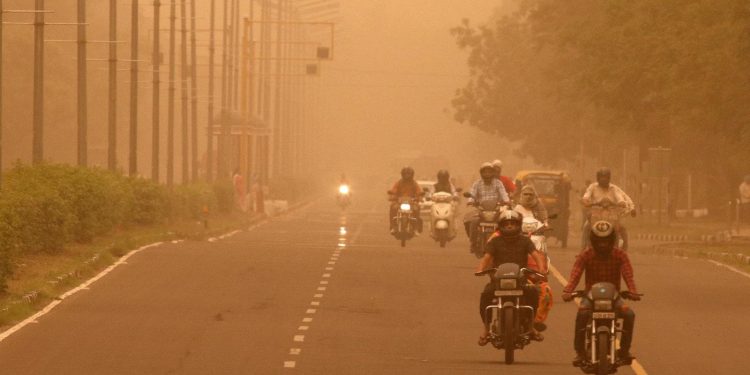New Delhi: The air quality of the national capital improved Wednesday due to change in wind direction which brought down the fire-related intrusion to three per cent, despite high fire counts in adjoining areas. The relief though will be short-lived.
This came as a relief for Delhi residents after the city continuously recorded severe category air quality for six consecutive days due to an increase in stubble burning and unfavourable wind speed.
Delhi’s air quality index stood at 383 micrograms per cubic meter at noon, as against to 476 Tuesday.
According to the Central Pollution Control Board, 12 out of 36 pollution monitoring station in Delhi showed severe air quality index reading. Mundka and Bawana area have the most noxious.
Delhi’s neighboring regions — Ghaziabad, Faridabad, Noida and Greater Noida — are logging very poor quality of air. Ghaziabad and Greater Noida’s air quality remained the worst, with air quality of 388 and 384 micrograms per cubic meter.
According to the Ministry of Earth Science’s System of Air Quality and Weather Forecasting and Research, “Delhi’s AQI has improved to very poor.”
“The change in transport level wind direction has led to a significant decrease in fire-related intrusion in spite of high fire counts. Relatively not so calm surface winds helped to flush out.”
The air monitoring system, however, added that the improvement of air quality will be short-lived. “Deterioration is expected on November 13. This is mainly due to expected calm winds and a shift towards North-westerly direction.”
The ministry had logged 2,422 synergized stubble fire counts over Punjab, Haryana, UP, Uttarakhand, and neighbouring areas on Tuesday. Though significantly high, the fire counts had started to show a decreasing trend after peaking around 4,528 on November 6.
“Stubble burning share in PM2.5 in Delhi’s air is almost negligible and estimated as 3 per cent for today due to unfavourable transport-level winds,” SAFAR officials added. On November 5, the share of stubble burning in Delhi’s air pollution had risen to 42 per cent, the maximum so far this season.
IANS







































